Share
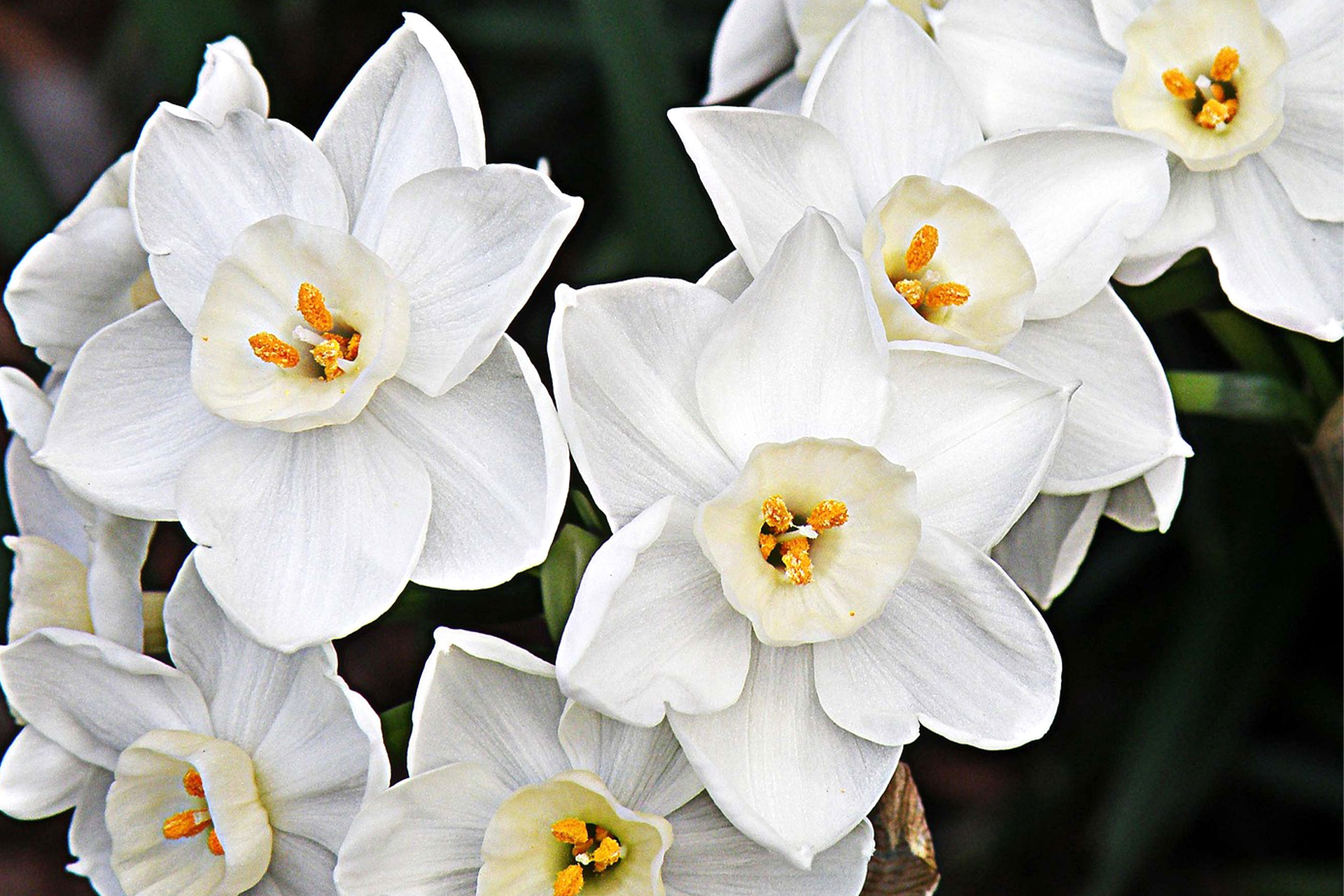
Dreaming of a Paperwhite Christmas
There are a surprising number of plants we consider holiday icons. From the classic conifer trees to beloved poinsettias and holly to flirty mistletoe, there are plenty of holiday plants to choose from when decorating your home this season. One that often goes overlooked though despite being one of the easiest to care for and one of the most striking is the elegant paperwhite.
You won’t often find Paperwhites in decorative foil or cut and lined up along a fence for you to pick from, instead these showy flowers come from humble beginnings. Paperwhites are flowering bulbs just like tulips, daffodils, crocus, and your other spring favorites. In particular, they’re part of the Narcissus family of bulbs, so you’ll see them sold individually, in bags, or sometimes in growing kits as nothing more than a regular brown bulb. It’s easy to see why they might be missed compared to the glitz and glam of the other holiday plants! These plants are named for the stunning snow-white color of their flowers though, which are on the smaller side individually but grow in clusters and stand tall, rising up to 2 feet tall when fully grown. That’s quite the statement in return for taking a chance on what starts as a plain old bulb!
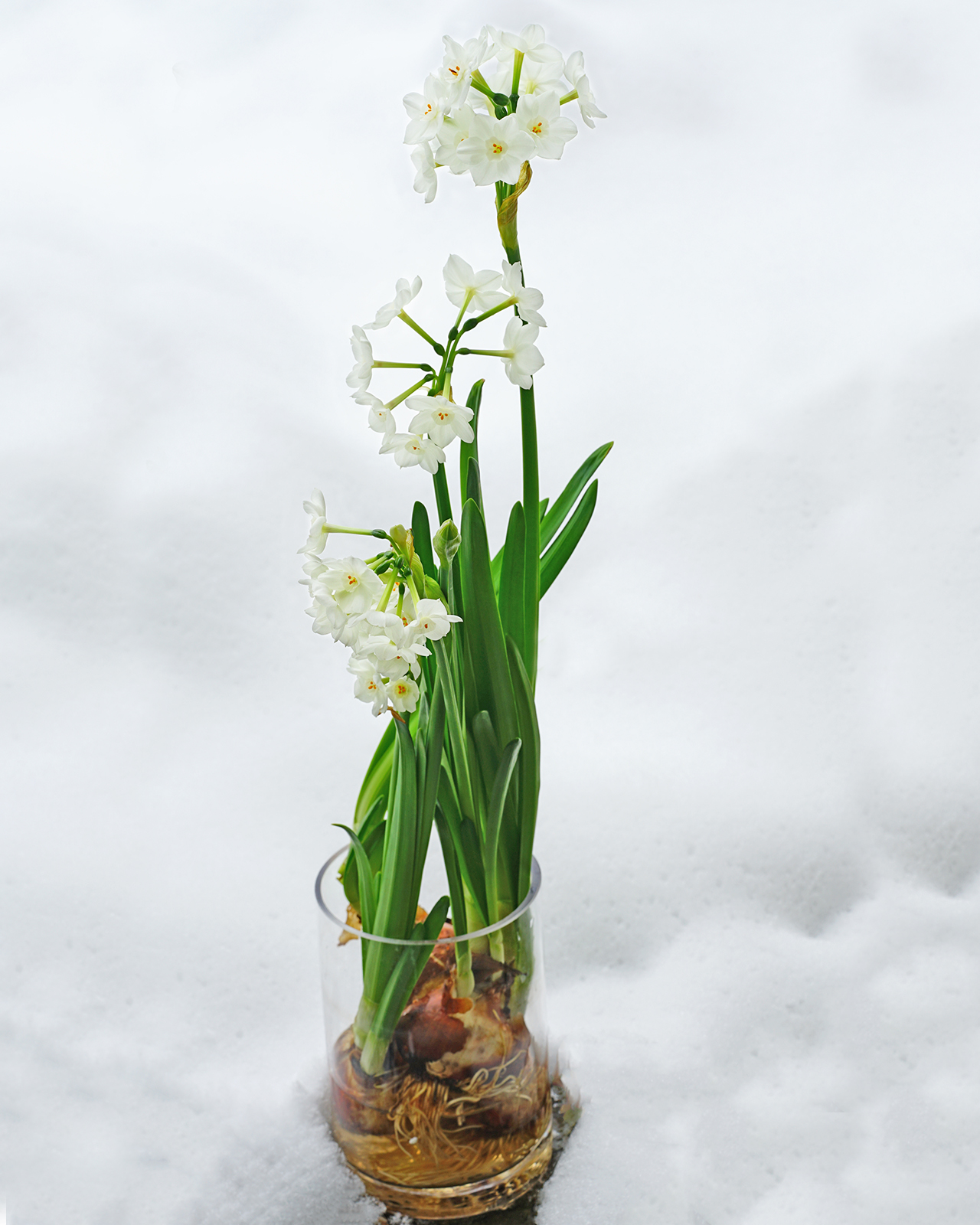
Paperwhites are native to the Mediterranean region from Greece to Spain on the European side and in Morocco and Algeria on the African side. They have since become naturalized in, that is growing on their own in the wild but not originally native to, the islands of Azores and Corsica and some of the hotter, more humid states in the US including California, Texas, and Louisiana. As we mentioned before, they’re part of the Narcissus family which includes daffodils and jonquils, hence their familiar shape. Paperwhites specifically are Narcissus papyraceus, which may also look familiar: papyraceus and papyrus, one of the earliest forms of paper, have the same root word. They really are Paperwhites, both in appearance and name!
If they’re part of the daffodil family, which is a symbol of spring, then how did Paperwhites become a holiday plant? The answer is Chinese New Year. Since they grow in milder climates than other Narcissus, Paperwhites bloom earlier. In the wild, this translates to blooming in February or March rather than March or April. This is still quite a ways from modern Christmas, but the Lunar New Year occurs on the first new moon of the lunar calendar, which can range anywhere from mid-January all the way to mid-February depending on the year. Notice the overlap? The bulbs originally made it to China through trade, so they were already a desired item but having this connection made them into a holiday favorite. One variety of Paperwhite is even called the Chinese Sacred Lily as a result of how entwined the plants became with the holiday. It’s considered especially lucky if Paperwhites are blooming in time for Chinese New Year, so, as humans tend to do with our favorite plants, we started finding ways to intentionally make them bloom when we wanted them to.
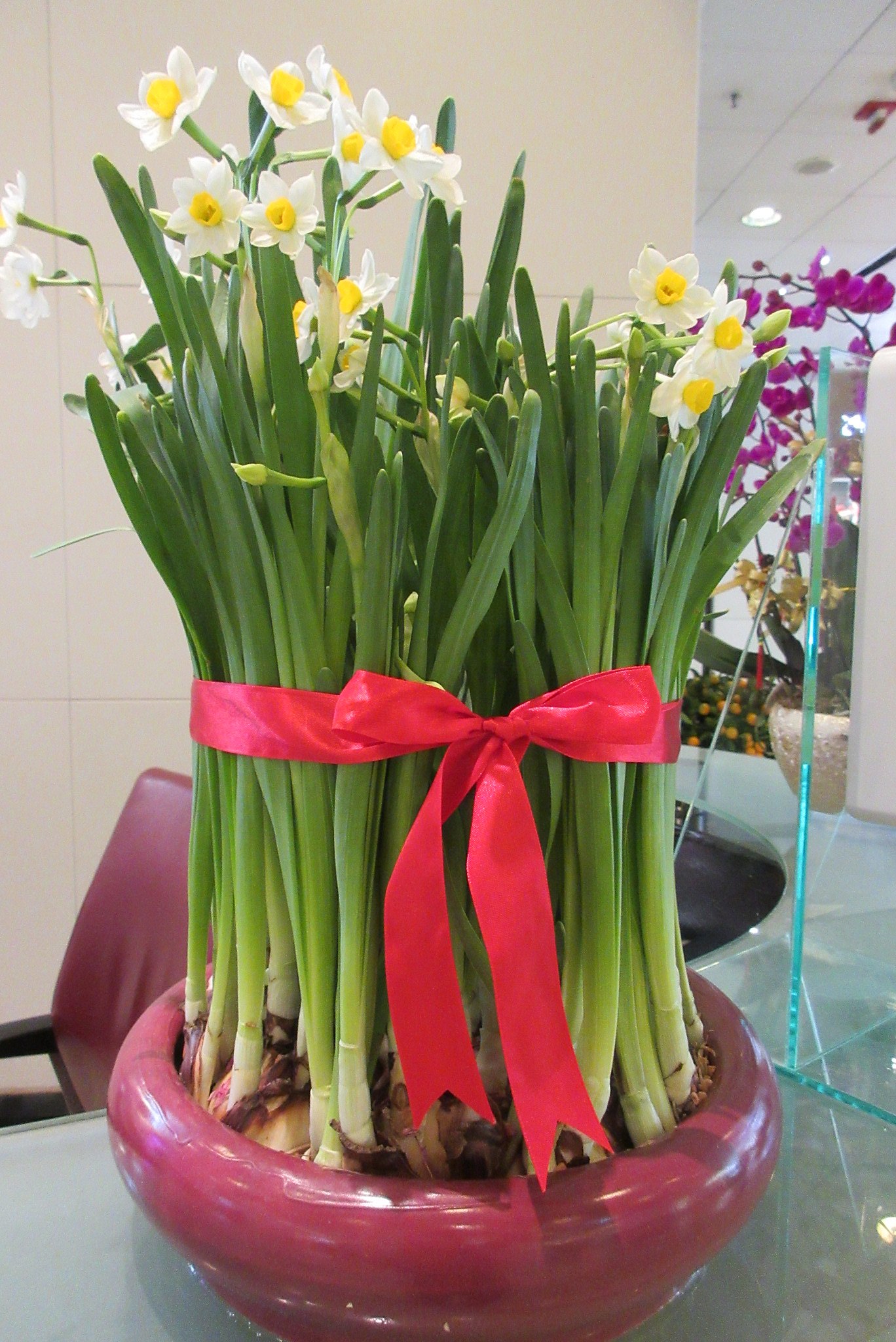
Chinese Sacred Lily Paperwhites
Photo by WAhimtiouhopar
This led to us learning how to “force” Paperwhite blooms. Forcing a bulb is the process of setting it up to grow at a time it normally wouldn’t, usually indoors and most often in climates where they wouldn’t survive otherwise. For most spring-blooming bulbs, a “chill period” is required where the bulbs are kept at 35-45 degrees F for a certain number of weeks depending on the type because in the wild they would experience the cold of winter. If you don’t give them a chill period, spring-blooming bulbs won’t produce the proper growth hormone and won’t grow. This makes them trickier but not impossible to force to bloom early, you just have to know your timing, have a way to chill them, and make sure you give them the proper uninterrupted chill period for their type. These things aren’t much of a challenge now when we have refrigerators and Google, but 1000 years ago this was a bit of an endeavor.
However, paperwhites don’t need a chill period at all thanks to their native mild climate, so they can be forced without the extra work and time, meaning it was quite easy to get the bulbs just a few weeks ahead of Chinese New Year and grow them indoors. Since Chinese New Year isn’t on the same day each year though, it became important to be able to force them to bloom in time for mid-January too, and as it turns out, since they don’t need that chill period, you can bring them back way further than that, which led to us being able to force them in time for the December holidays too. Paperwhites can actually be planted indoors any time of year, but the bulbs typically don’t start to become available until September if you’re keen on a Halloween bloom, and you’ll only really start seeing them available in large numbers in October so they can be planted up in early November and bloom in time for Christmas.
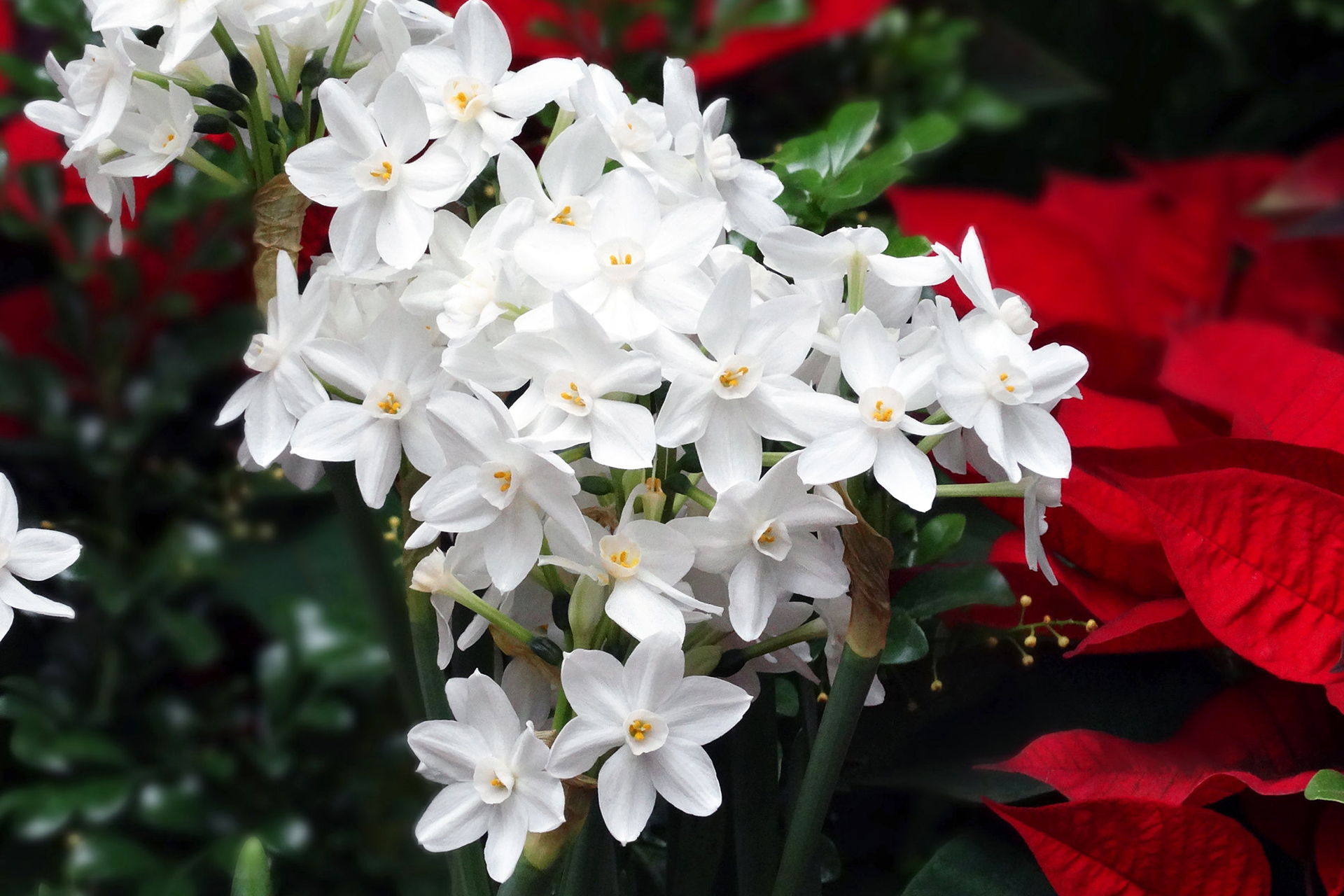
A Standout Among Holiday Favorites
Photo by Paul McCarthy
So, how do you force them? It’s super easy! Simply get some sort of container that’s at least 4 inches deep, place sand, rocks, gravel, marbles, glass beads, decorative pebbles, or even wine corks inside, gently press the bulbs down on top of your medium of choice with their pointy ends up, and fill with water until the bottom nodules where the roots on the bulbs’ are is covered. Then, set your container in a spot where the bulbs will be kept about 65-75 degrees F with bright indirect light and keep the water at the same level as they grow. That’s it! You can use anything from vases to buckets to dishes to grow them in but they look best when you plant 2-5 together for a whole bundle of blooms, so keep that in mind when choosing the size of your container. It’s recommended that they’re potted no later than Thanksgiving if you want them to bloom in time for Christmas, but since it takes them 4-6 weeks to grow just know that every day we get closer to December is another day closer you’re cutting it if you’re dead set on having those white flowers for Christmas! The sooner you plant them, the better!
If you’re really pressed for time, you can try adding a bit of fertilizer to your Paperwhites. This can make them grow quicker, but it may also make them grow larger, which can be a problem as the taller the Paperwhite the more unstable they are. Larger Paperwhites with heavy bunches of flowers can easily bend in the stem, which makes them less attractive and might cause breaks. Try using bamboo sticks and plant-safe ties or clips as stabilizers if you encounter this problem. Conversely, if you want shorter and sturdier Paperwhites, you can add a little bit of alcohol to their water to stunt their growth. Once you have a shoot of at least 1 inch tall coming out of each bulb, pour off the water they’ve been growing in and add an alcohol and water mixture. Keep using this mixture as they grow to get plants that are half the size of a regular Paperwhite or shorter. This won’t impact their blooms, but will make their stems and leaves stick to a more compact size. When we say alcohol we don’t mean your favorite spiked eggnog either, we’re talking liquor like gin, tequila, or vodka. It’s not that they prefer the hard stuff, it’s that giving them other types of alcohol like beer or wine introduces sugars that can harm the plants’ health and cause bacteria to grow. Use a 5% mixture for the best results without giving your bulbs alcohol poisoning. For isopropyl or rubbing alcohol, that’ll be 1 part alcohol to 10 parts water. For 80 proof liquor, that’ll be 1 part alcohol to 7 parts water.
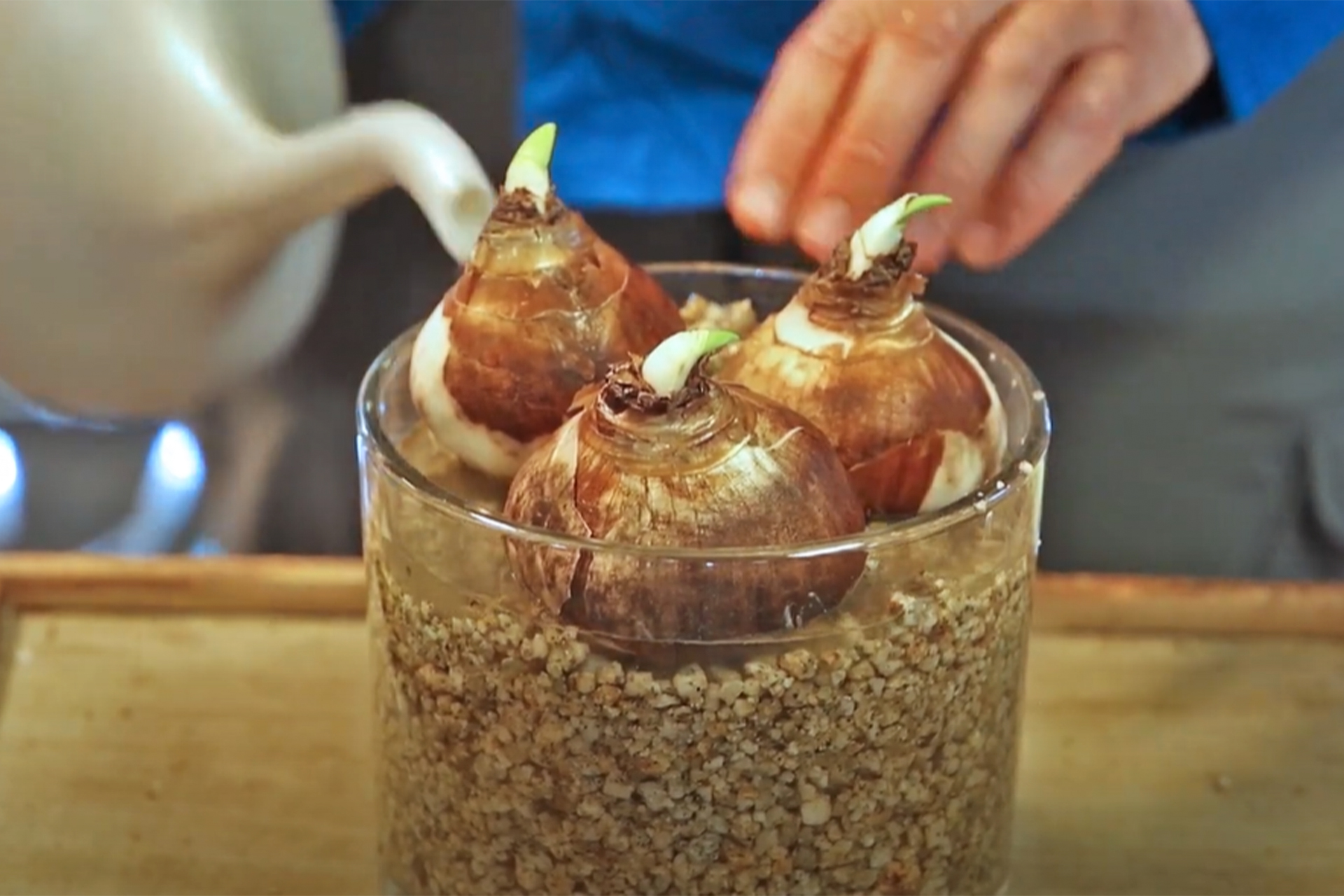
Unfortunately for fans of these snowy flowers, Paperwhites can’t be planted outdoors in our area. While other daffodils don’t mind and even need the chill, it simply gets too cold for Paperwhites here, which need much more mild winters to survive. They can be planted outside in USDA Zone 9-11 but with Northern Nevada ranging from 5 to 8, planting them inside is really our only way to enjoy these storied beauties. Paperwhite bulbs lose their viability after a few weeks and forced plants have a very low chance of reblooming, so you can’t stock up on a bunch and plant them throughout the year or nurse one you already have into a second bloom later on. They’re truly an annual holiday tradition.
Don’t let that stop you though! These traits just make them all the more special for the holidays, and with how easy they are to force, they make a great gift or a great project for the kids each year, easily becoming a family tradition. Check out the video below for step-by-step instructions on how to force them and more fun facts about these interesting little plants, then get some bulbs and have a Paperwhite Christmas this year!
If you have any questions, stop by any one of our three Moana Nursery garden centers or contact us online.
Share
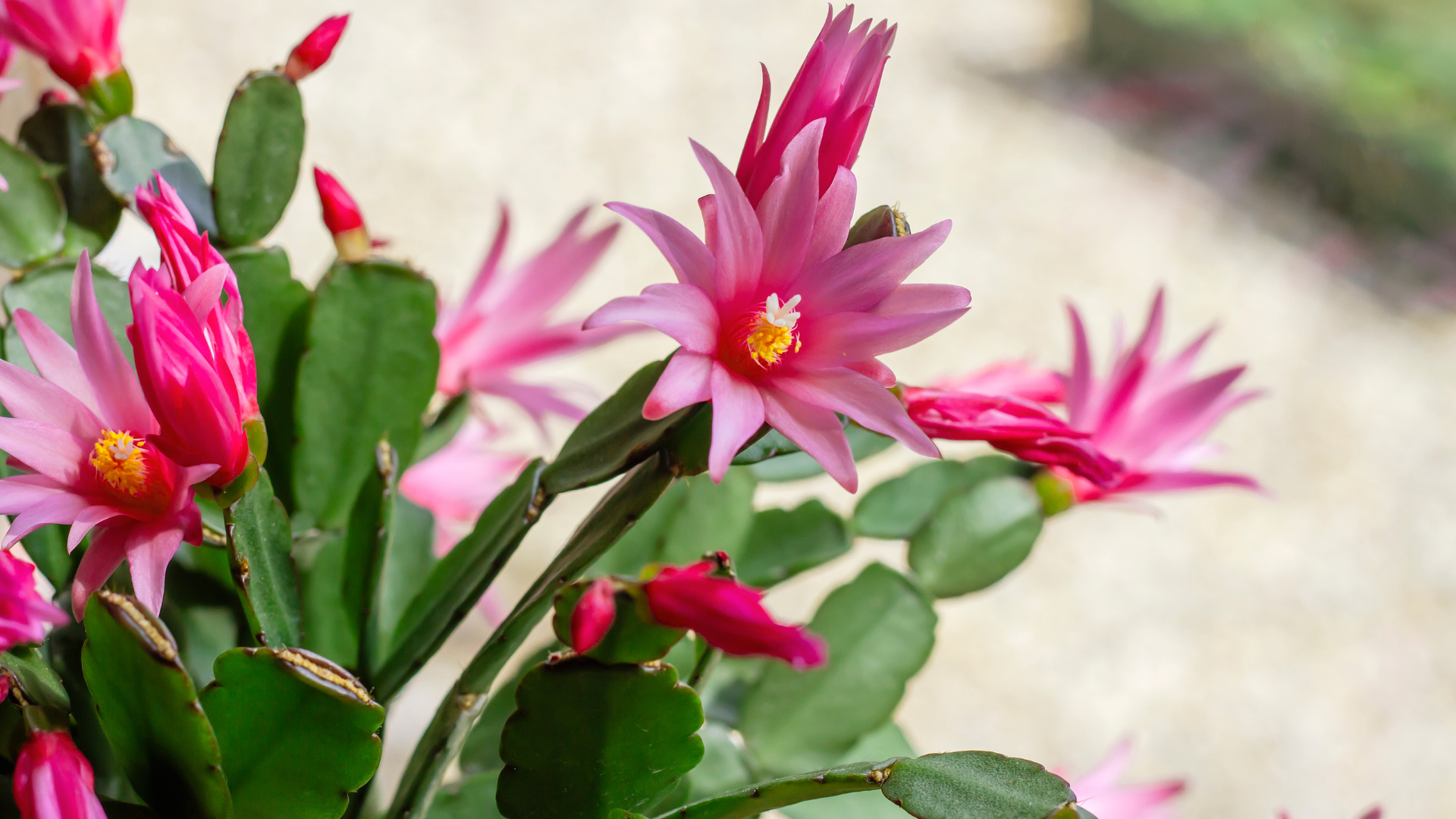
Rhipsalidopsis gaertneri, commonly known as Easter Cactus or Spring Cactus, is a stunning succulent that blooms in spring, adding a burst of color to indoor gardens.
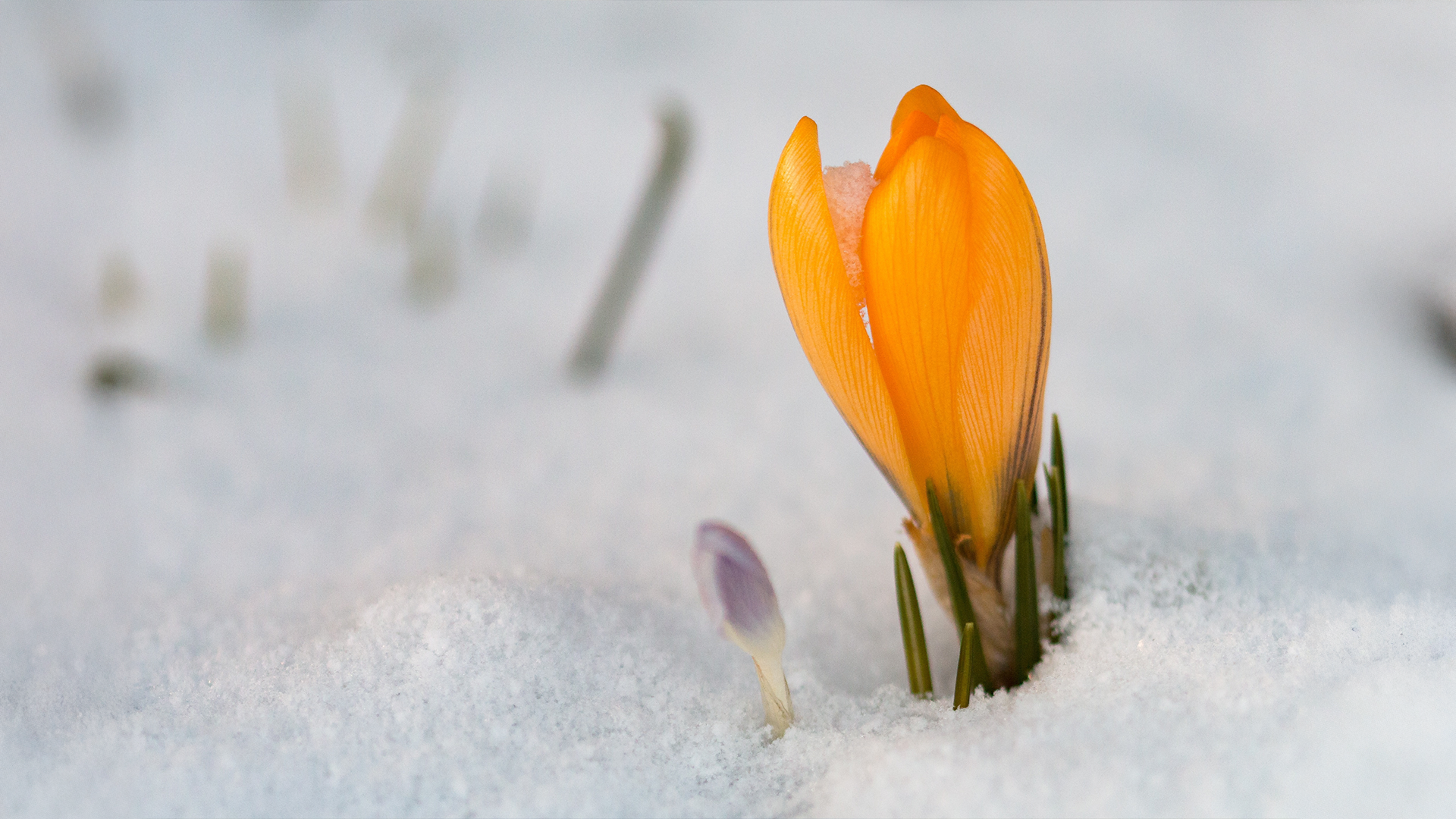
Sometimes a sudden warm spell can trick your spring bulbs into emerging too early. Here's how to protect your bulbs and ensure they thrive once the true spring weather arrives.
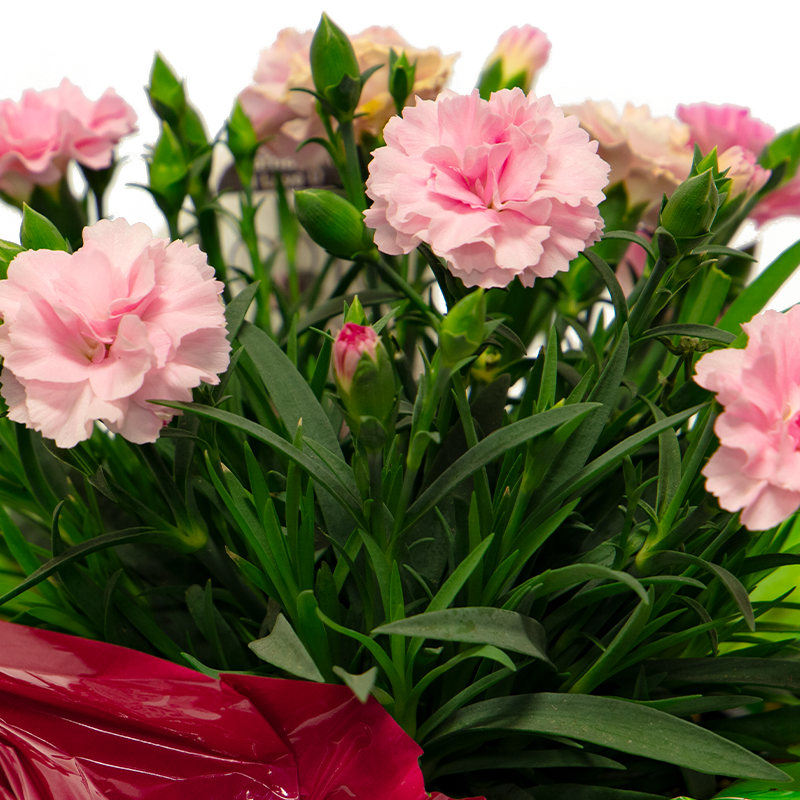
Dianthus are more than just beautiful flowers—they embody resilience, charm, and the promise of vibrant blooms both indoors and out.
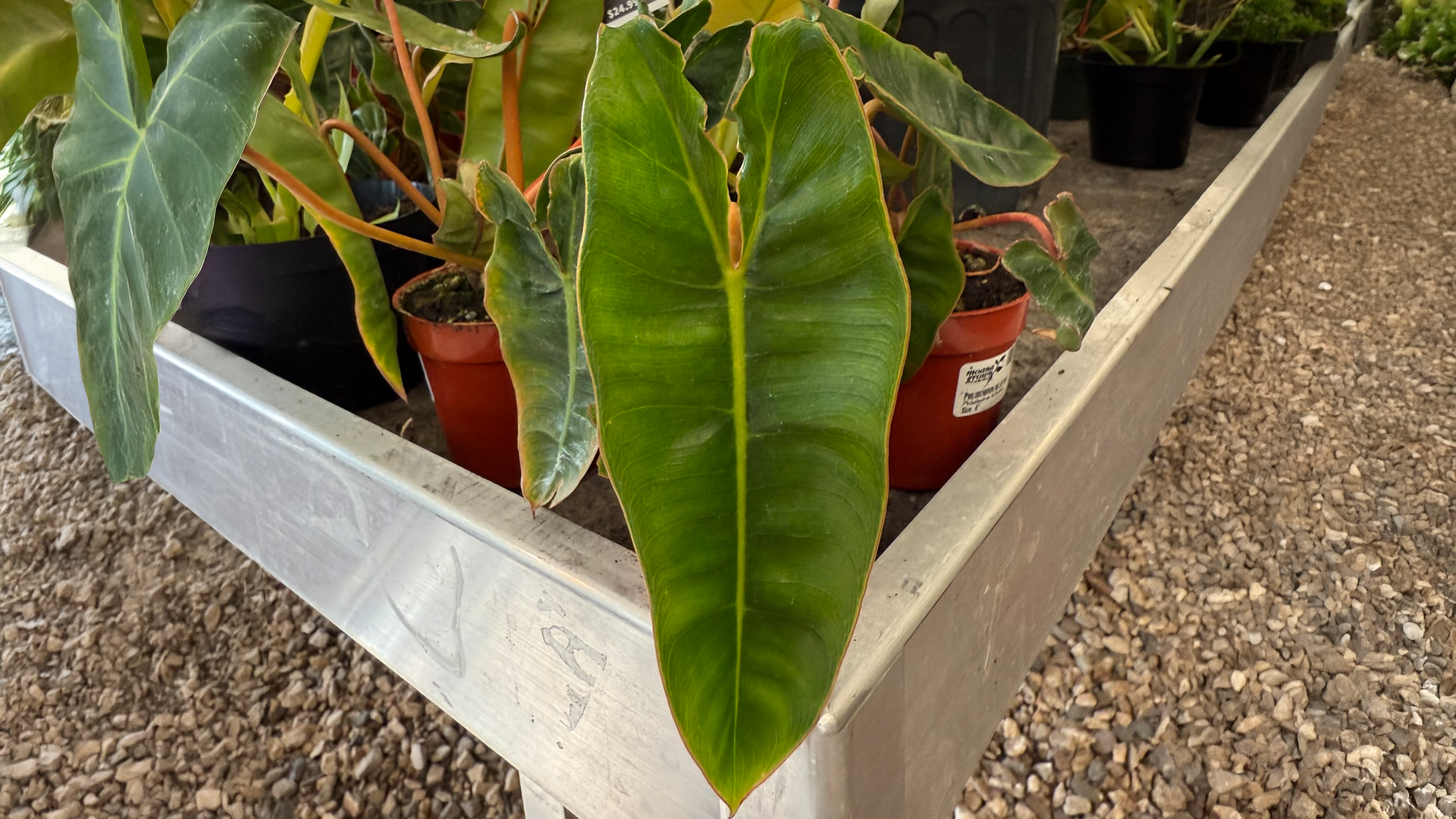
Renowned for its stunning foliage and relatively easy care requirements, this tropical plant has captured the hearts of plant lovers worldwide.
